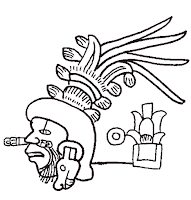The Book of Mormon refers to various Old World animals, most of which are believed to not be indigenous to the Americas. Evidence for their existence or even what animals are being referred to is a topic for another discussion. But all throughout Nephite history, there is a mention of their having 'flocks and herds,' although the actual animals they contain are not specified.
Domestication of animals in Ancient America is a murky subject. According to an article at the National Library of Medicine, "The nature of animal management in Mesoamerica is not as well understood compared with other state-level societies around the world." Recent studies show evidence for the use of animals at the Maya city of Ceibal, a site in central Guatemala that we visited. Carbon, nitrogen, oxygen, and strontium isotopes show what kind of flocks and herds the Maya had, exercising some form of animal husbandry.
Using a multiisotope approach to examine faunal specimens, scientists have found the earliest evidence for captive-reared taxa in the Americas, showing that animal domestication and husbandry played a greater role in life at Ceibal than was previously believed. This city's central plaza is one of the earliest known in the region, with human habitation at the site going back as far as 1000 B.C. Live animal trade in the area is now known to go back as far as at least 700 B.C. Based on the evidence, the Maya had dogs (some used for hunting and some as food), deer, peccaries (a type of wild pig), tapirs, cats, and turkeys, among other animals. The more we learn the specifics of Maya and other cultures in Ancient America, the more we see that they had the same kinds of complex societies known in the Old World, including, urban areas, capitals, governments, markets, schools, agriculture, and even animal husbandry. These were not a primitive, Stone Age people as was first believed.
Many controversial aspects of the Book of Mormon have been shown to be plausible as we learn more about the history of the New World. While not a direct one-to-one comparison, strong evidence for large scale animal domestication among the Maya coincides with the Book of Mormon account.
Click here to read about the earliest isotopic evidence for animal management at Ceibal.














